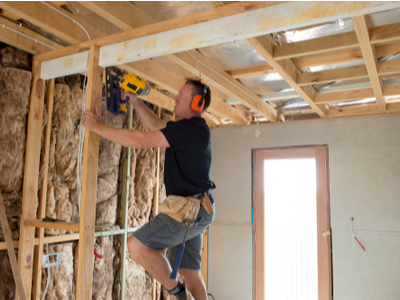
Builders: Six Steps to Turbo-Charge Your Profits
Becoming a truly successful builder can sometimes feel like a whole lot of trial and error. This article gives practical “short-cut” steps for you to maximise profits to maintain your sanity and control your destiny
.
- Effect of Increasing Your Prices – Some Quick Math
It’s true that when you increase your prices, fewer people take up your services – what economists call ‘price elasticity’.
So, as a builder you have a choice of doing many jobs at a low margin or fewer jobs at higher margins.
So, what does that do to your bottom line and your business?
Imagine two builders.
Builder A takes on 5 jobs at a time with a 15% markup while Builder B does 3 jobs at a time with a 30% markup.
Let’s say the average cost to the builder for each project is $500k. So, the two options look like this:
Builder A
5 jobs x $500,000 x 1.15 (mark up) = $2,875,000 in Revenue
Less 5 x $500,000 (cost) = $2,500,000 Costs
Leaves = $375,000 Gross Profit
Builder B
3 jobs x $500,000 x 1.3 (mark up) = $1,950,000 in Revenue
Less 3 x $500,000 (cost) = $1,500,000 Costs
Leaves = $450,000 Gross Profit
That is, the builder who charges the higher margin achieves a higher profit with less effort and risk.
Three jobs mean less stress, fewer people to manage, less financial risk, lower materials outlay, better cashflow, fewer moving parts, fewer customers/architects to manage, better quality control, less driving from site to site – the list keeps going.
This shows how fatter margins can dramatically change your business outcomes. Read on to see how to make that happen.
ProCalc – the Builders Price Guide
2. The Truth About Competitive Tenders
Did you know that truly competitive tenders consistently have a 20% difference between highest and lowest price?
This price difference is surprisingly consistent amoungst the architects and clients with whom we’ve researched or worked over the last 10 years.
That is, there is no single, ‘correct’ way to price a job. Every builder will quote according to the nuances of their own business, creating this 20% difference from highest to lowest.
If you’re sceptical about charging higher prices, the price per job in each of these scenarios (above) is:
Builder A: $575k (avg. price per project)
Builder B: $650k (avg. price per project)
In this case, if builders A & B were quoting against one another, builder B would be only 13% higher than builder A. So, they’re easily within the 20% high/low range that competitive tenders produce.
The undeniable fact is that builders’ margins are not set in stone.
There’s nothing unreasonable about charging high margins if they’re justified.
So, how do you get clients to accept your higher tender price? Read on….
3. Start With Your Ideal Customer in Mind
It stands to reason; customers who are prepared to spend more on their project must have the money to spend.
So, when you think about potential customers, it helps to consider their demographics such as age, income, location, stage of life, etc.
To illustrate, consider two extremes:
The First Home Buyer
- Younger
- Not yet earning their highest life-time wage
- Possibly living in a home they will likely sell in a few years’ time
- Have spent most of their savings on their house deposit
The Baby Boomer
- Older
- Have earned their highest wages in their most recent years
- Creating a home they can live in for the rest of their lives
- Have built-up wealth over several decades
In this case, the baby boomers are a higher yield customer. More money, larger project plus the life experience to help them deal with the challenges of a construction project.
There are many groups you can target such as double income no kids, solo people (at various ages), same sex couples, etc.
The point is that if you want to charge more for your services, make sure you target customers who can afford to pay you more.
So, how do you justify charging more for your services?…read on.
Take a Free Trial, ProCalc – the Builders Price Guide
4. Specialists Charge More
Just as a heart surgeon specialises in a narrow field (with great financial rewards), builders can also narrow their focus to become experts who charge a more for their specialisation.
Clients are drawn to builders who can illustrate how their specialist knowledge makes them a better choice for the project.
A great example of this might be passive house builders. Building and showcasing your credentials will position you as a premium builder in that space for which clients are prepared to pay a little extra.
That is, builder’s price is not the singular, most important factor for clients. Instead, they seek expertise and confidence in your ability to deliver.
These specialisations are endless: sloping block specialist, first floor extension specialist, architecturally designed new home specialist…you get the picture.
You can even specialise in location such as a bayside specialist, inner-metro renovation specialists, west coast experts and so on.
Or, you could specialise by target market: Your Forever Home Builder, Smart Homes for Smart Couples, Family Home Specialists, etc.
Basically, you can specialise in any niche you can describe (or identify). Once you position yourself as the expert in that niche, your reputation and margins begin to grow. You become ‘the guru’.
The opposite of specialisation is to generalise. The generalist grasps for any work they see going by.
Sadly, generalists are hired on price, not a speciality so it becomes a race to the bottom for the cheapest price when tendering.
Always specialise. It will be really tough for you to charge premium margins if you’re a generalist.
Free Webinar: Successful Builder Work Smarter, Not Harder
5. Qualify Each Client Before Investing Too Much Time
So far, you’ve got your ideal customer who is drawn to you because you’re a specialist in their type of project.
They’ve seen your website or been recommended to you by their architect and now they want you look over their concept drawings to discuss costs.
The next step is to confirm they can afford your services and have the financial resources to make it all happen.
As you know, providing informed responses to these requests can take hours of your time and often results in further design changes they ask you to cost.
That is, it’s labour-intensive process that’s a highly speculative use of your time.
Instead, you can use ProCalc to generate an industry-driven estimate in just minutes that’s based on builders’ costings from hundreds of real builders projects in the current market. Take a free ProCalc trial here.
This allows you to provide the client with a sensible market estimate to determine whether they can afford the project (and your services) without spending hours of your time estimating.
Trying to progress clients without qualifying them will often waste your time.
6. Charge For Detailed Estimates (with a rebate if you’re engaged)
By the time working drawings become available, you’ve attracted the right type of client who wants a project that you specialise in and you know they can afford your services.
If you’ve got all these building blocks in place, many clients will be open funding your detailed tender response to cover the time you put into it.
Again, this further qualifies clients who respect the value of your time and have the life experience to understand that good information takes time & effort. Builders’ charges for quotes vary from between $800 to $3,000 and are typically incorporated into the build cost if the client selects your company.
Crucially, it will be difficult to charge for estimates if you haven’t built your platform properly (as outlined above).
Free Webinar: Successful Builder Work Smarter, Not Harder
In Conclusion
Hopefully, you’ve seen how higher margins can make a huge difference to your business. However, to justify higher prices you need to give the right ‘product’ to the right client group, qualify them and then engage professionally.
This article is based on best practice observed in the market-place by successful and experienced builders. If you implement these steps over the coming year, the spoils are yours to be had. Good luck!
You Might Also Like:
Free Webinar: Successful Builder Work Smarter, Not Harder
How Does ProCalc Stay Accurate?

Author Richard Armstrong is a project manager & former registered builder who specialises residential construction pricing. With post-grad property qualifications and over 15 years’ design & construct experience, he is the Founding Director of ProCalc – Professional Construction Estimator. Free trial at www.procalc.com.au.





